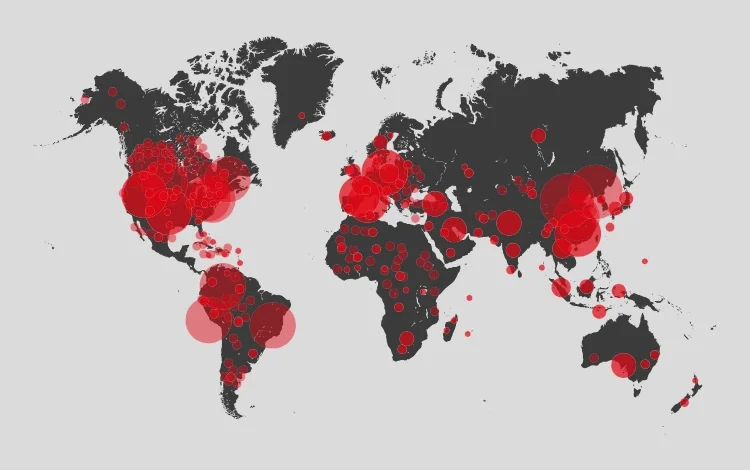A University Tool That Tracks Global Outbreaks in Real Time
Brown University’s Pandemic Center compiles a weekly report that tracks the spread of diseases like measles, mpox, and influenza across the globe.

In early 2025, as measles cases increased across North America and Australia reported its first mpox infection, a small public health team at Brown University had already flagged these developments. Their global outbreak tracker, published by the university’s Pandemic Center, has become a resource for those seeking consistent updates on global disease activity.
The report is concise and publicly available, offering verified information about the spread of infectious diseases such as COVID-19, cholera, influenza, and pertussis. Though modest in presentation, it fills a gap left by inconsistent federal updates and shifting reporting standards.
A Consistent Source Amid Patchy Data

Launched in 2024, the Tracking Report was developed by a team led by Jennifer Nuzzo, an epidemiologist and director of the Pandemic Center at Brown’s School of Public Health. “There wasn’t a single place that offered a snapshot of global outbreaks,” she said. “So we created what we needed.”
The newsletter pulls together information from the US Centers for Disease Control and Prevention, state health departments, and international health agencies. In some cases, it provides data such as hospitalization rates or vaccination status that isn’t always included in national summaries.
Who Reads It and How It’s Used
The Tracking Report has been adopted by a wide range of readers. Public health departments consult it to stay updated on regional trends. Educators use it to support classroom discussions. Some senior living communities reference it to assess risk for residents.
Carolyn Needleman, a retired professor now living in Providence, says she started reading it during the COVID-19 pandemic and has continued since. “It’s become a routine check-in,” she said. “It’s practical.”
At the University of Wisconsin-Milwaukee, Dr. Loren Galvão uses the report as a classroom resource. “The source matters,” she said. “And I trust this one.”
How It Works
The report is compiled manually by the Pandemic Center’s research team, who review available data each week. They summarize key figures—such as rising pertussis cases, new regional outbreaks, or increases in child flu deaths—and include links to primary sources when available.
Each edition includes a short commentary from Dr. Nuzzo that frames the data in context. For instance, a recent edition noted a sharp rise in pertussis among children under five and discussed how vaccination rates may be influencing its spread.
While the information is technical, the writing avoids academic jargon. The goal is to offer clear, evidence-based updates without speculation or alarm.
A Model for Future Health Communication?
Though it began as an internal solution, the Tracking Report now functions as a tool for broader public use. Its open-access format and consistent schedule have drawn attention from health professionals seeking more reliable alternatives to irregular public dashboards.
The format is straightforward: bullet-point summaries, short context notes, and curated links. There’s no push to interpret the data for the reader—just an effort to make it accessible.
According to readers and contributors, the success of the tracker lies in its neutrality and focus. “It gives you what you need to know,” said Needleman. “Not more, not less.”
Looking Ahead
With global disease threats continuing to shift, the role of non-governmental reporting tools may grow. The Tracking Report isn’t intended to replace public health agencies, but it does illustrate what timely, transparent communication can look like—especially when built by teams grounded in public health research.
As Dr. Nuzzo put it, “We need ways to understand what’s happening now, not just what happened last month. That’s what this report aims to provide.”
[Source]








